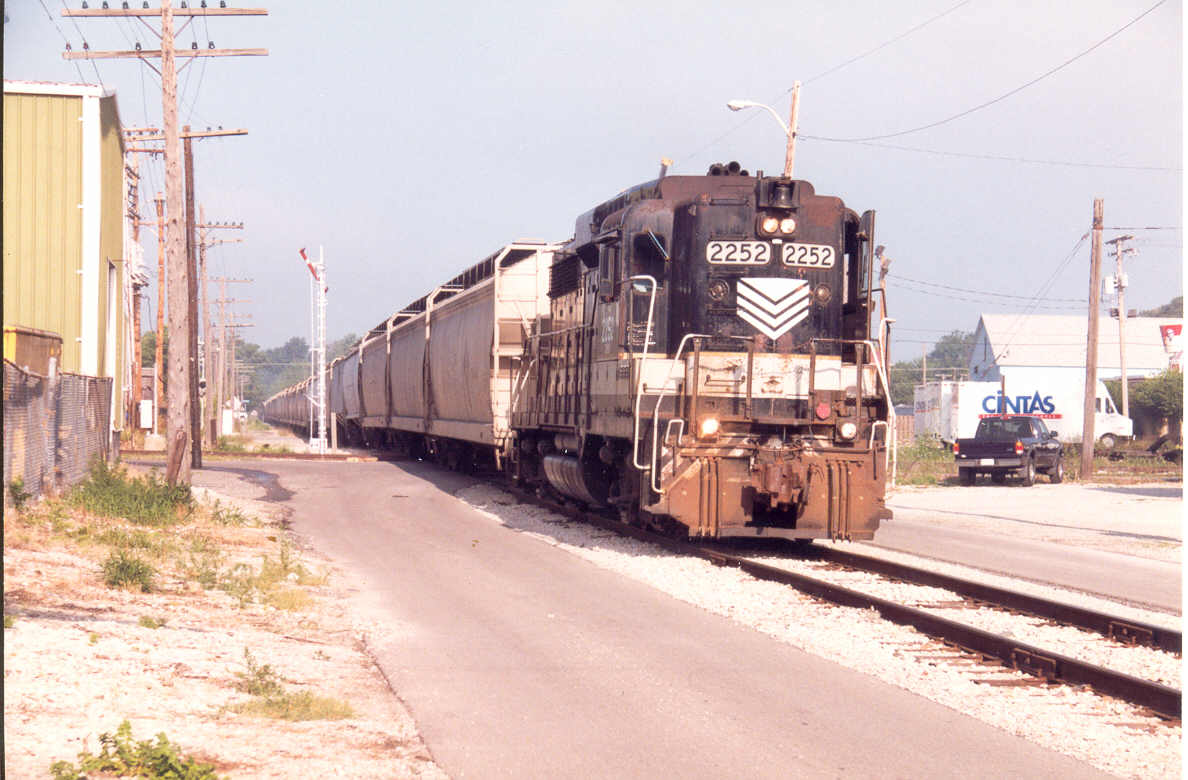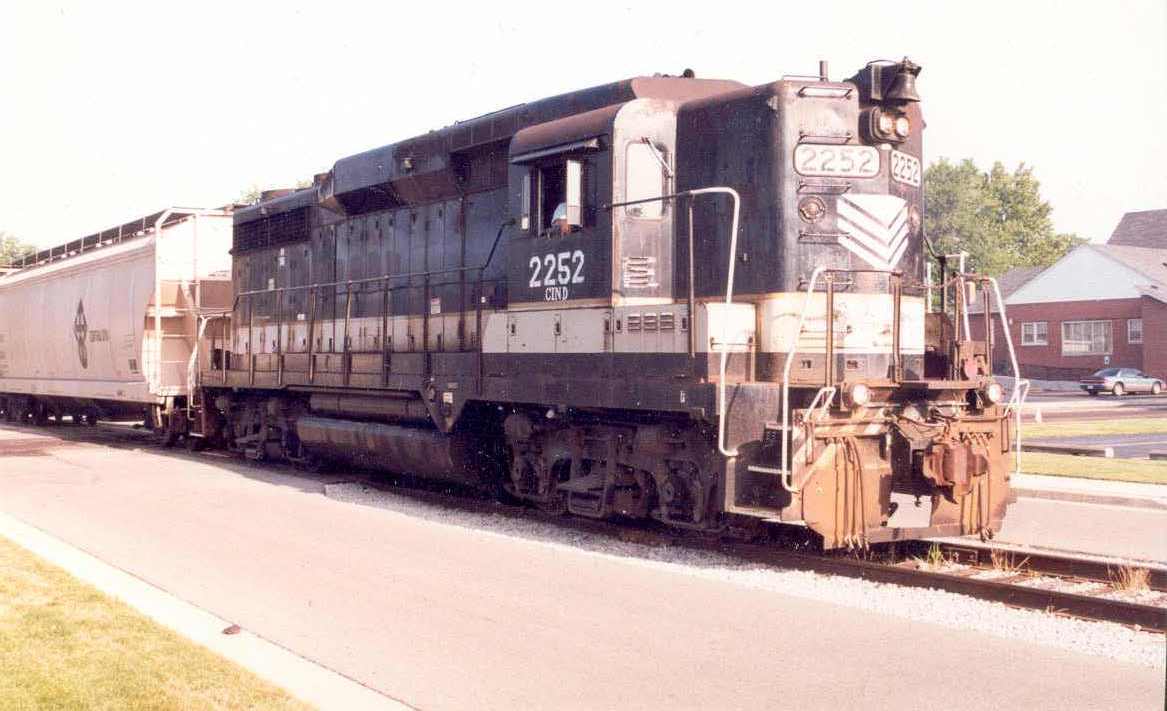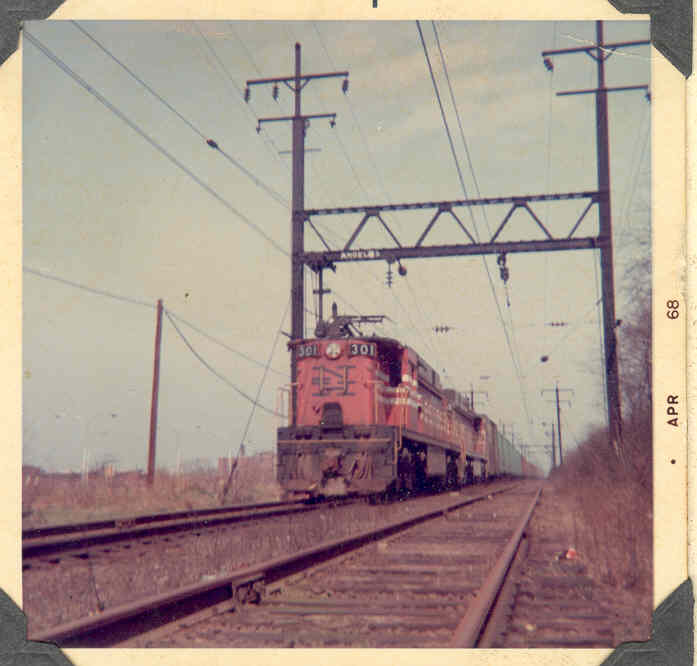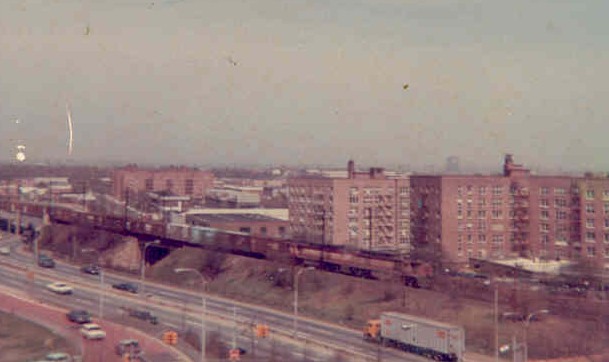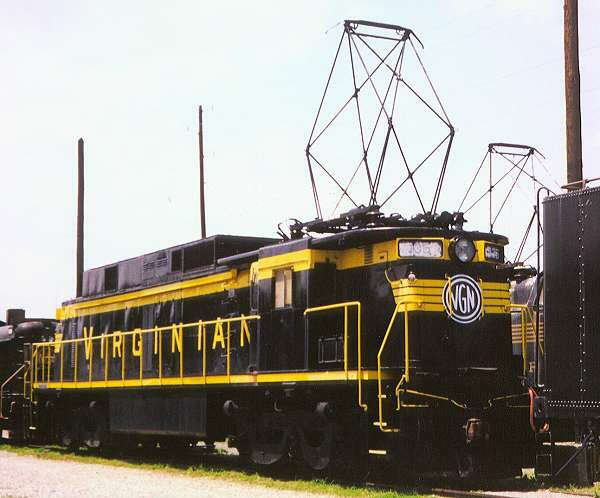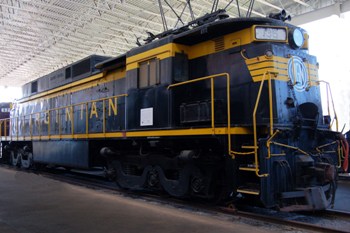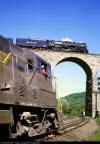The Virginian originally used a fleet of three-unit boxcab locomotives designated EL-3A. These were supplemented in 1946 by two pairs of two-unit streamlined locomotives designated as EL-2B. By the 1950s, the EL-3A fleet was becoming life-expired, and Virginian went to GE for new locomotives as replacements. The locomotives were delivered to the Virginian between October 1956 and January 1957 and numbered 130-141. GE used then-new Ignitron rectifier technology, first used on the experimental Pennsylvania Railroad E2c and E3b locomotives. Although this same technology was used with less-than-optimal success on the earlier EP-5 locomotives built for the New York, New Haven and Hartford Railroad, it worked flawlessly on the Virginian’s EL-Cs due to the much larger area available in the EL-C (which lacked the steam generator/fuel tank and weight restrictions necessitated in the EP-5).
In December 1959, the Virginian Railway merged
with the Norfolk and Western Railway. The N&W renumbered the
locomotives 230-241. Only one of the locomotives was
repainted, it being No. 235, which required it, after an accident.
The N&W only routed eastbound traffic over the former Virginian,
with all westbound traffic going over the N&W’s original route.
The electrification system became surplus to requirements and was
shut down in June 1962. Locomotive #230 was
rebuilt as a road slug the next month and renumbered 180. All
of the locomotives were sold to the New Haven which classified them
as EF-4, and renumbered them 300-310 (N&W #180 was used as a parts
source for the others). In 1969, new owner Penn Central reclassed
them as E33 and renumbered the 300 and 302-310 as 4601-4610 (New
Haven #301 was damaged in an accident and scrapped). Retained
and repainted by Conrail, all 10 E33s were retired at the end of
March 1981 when Conrail shut down its electric freight operations.
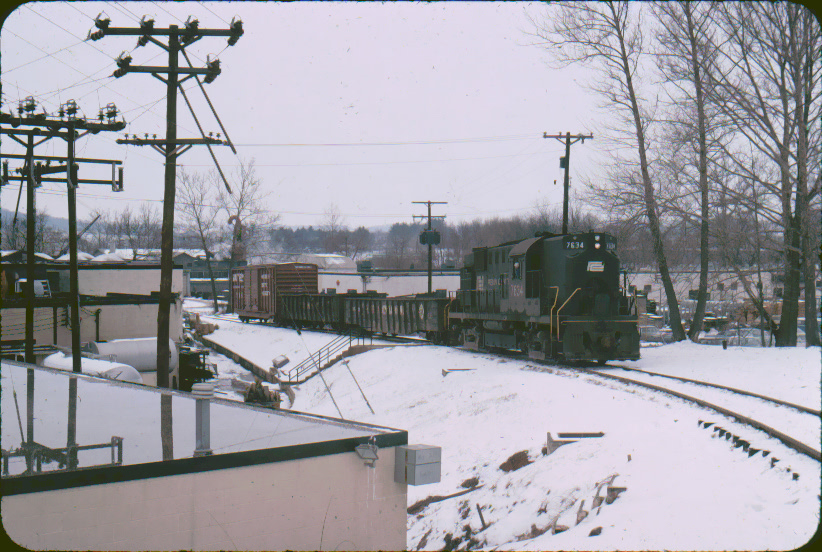
A Penn Central local freight in Cockeysville MD, on a cold winter day back in February, 1972, with RS-11 #7634.
The freight is coming out of an industrial park, headed back up to the mainline siding. A little evidence of the siding still exists, with some rail showing thru the pavement.
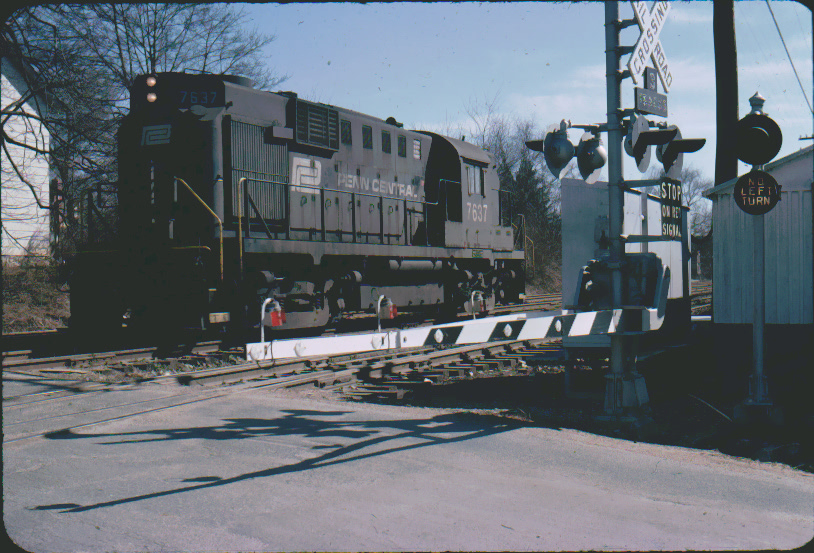
What a difference a month makes! This picture, from March, 1972, is only a couple hundred feet away from the above photo, with the train being on the mainline between Baltimore and Harrisburg. If we only knew today what was coming six months later, this boy would have been out every day taking pictures along the NC, for that's when hurricane Agnes hit Maryland and tore up the Northern Central. The "no turn on left sign" disappeared years ago, and up until 2005 or so, the MTA kept a speeder in a small shed on the left side of this grade crossing, so MOW could inspect the R-O-W. Everything is completely overgrown, and as of DEC 2006, NS filed for abandonment of the NC line, due to the fact that the MTA had the line torn up for double tracking and nothing was moving.
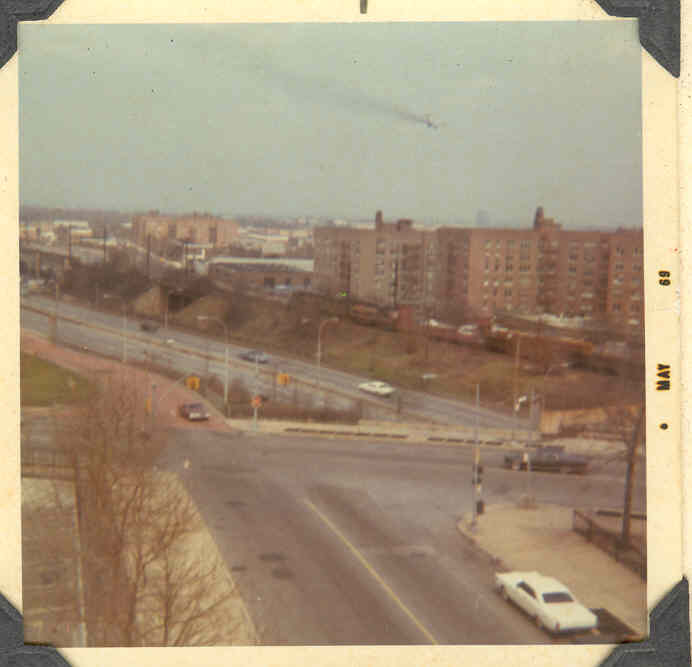
You can't really tell from the photo, but those are New Haven DL-701's pulling a northbound Penn Central freight through Queens, New York in May of 1969. It was really impressive to watch a NB and SB freight pass each other here, and I never caught it on film :-( The track is no longer a straight shot, as they curved the track maybe around~1997??? so they could straighten the terrible "S" curve on the BQE (on the very left of the photo).
Cool engines, what can I say, very cool..... These pictures were taken in Spencer NC back in 2012 as part of NS's 20th Anniversary.
759 ran an awful lot of excursions back in the late 60's and early 70's. A lot of them were based out of Baltimore MD, once it returned from it's engagement as the American Railroads ambassador to the Centennial celebration in Promontory Utah in May of 1969.
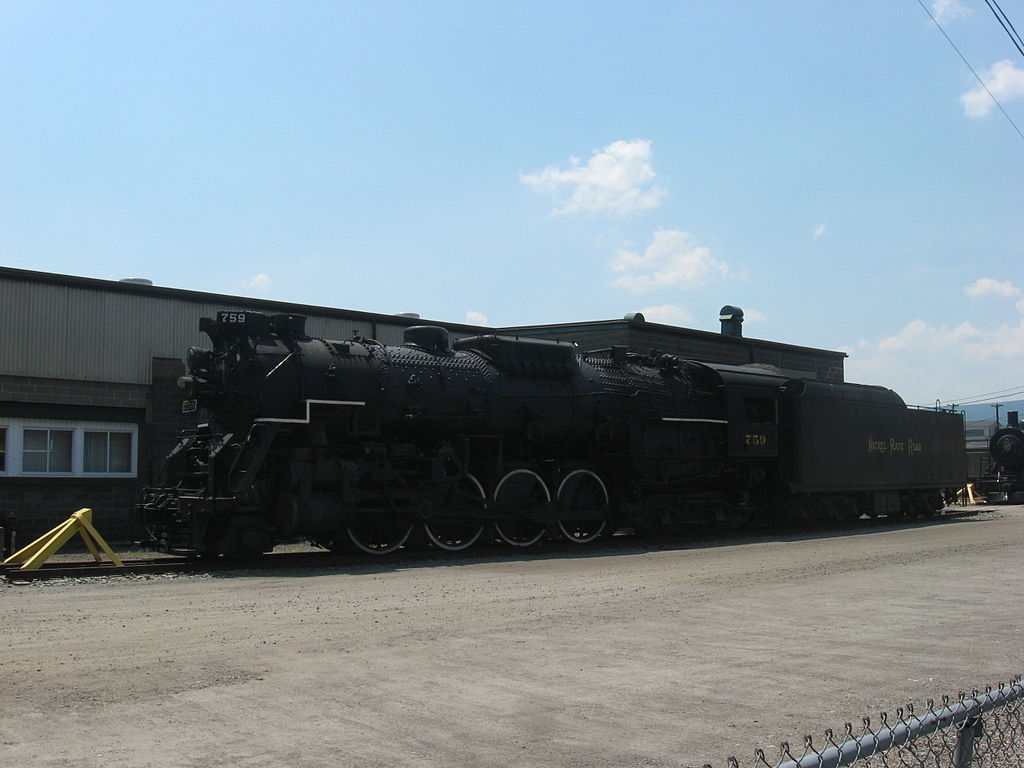
the following stuff comes from Wikipedia at: http://en.wikipedia.org/wiki/Nickel_Plate_759
About 759
Nickel Plate Road 759 is an S-2 class 2-8-4 Berkshire class fast freight steam locomotive
History
759 was built in August 1944 by the Lima Locomotive Works in Lima, Ohio for the New York, Chicago & St. Louis Railroad, better known as the Nickel Plate Road. 759 was one of 80 2-8-4 Berkshire type steam locomotives built for the Nickel Plate between 1934 and 1949 for fast freight duties. The Nickel Plate had 4 sub-classes of 2-8-4s corresponding to which order the locomotive was in, these were designated S through S-3, 759, is a member of the third order of 2-8-4s and is therefore an S-2 class.
Much of 759's original career on the Nickel Plate is obscure at best, but it is known that in May 1958, 759 entered the Nickel Plate's Conneaut OH shops for a complete overhaul which turned out to be the last overhaul of a steam locomotive on the Nickel Plate. After the overhaul was completed, 759 was never fired up and instead was put into storage.
759 was purchased by steam locomotive enthusiast, F. Nelson Blount on October 16, 1962 and subsequently moved to Steamtown U.S.A in North Walpole NH with the rest of his collection. She would later be moved to Bellows Falls, VT.
In 1967 a commodities broker from New York named Ross E. Rowland Jr., who had previously leased another one of Blount's locomotives, made a deal that would return the 759 to service for steam powered fan trips hosted by Rowland's High Iron Company. 759 was taken to the Norfolk & Western Railroad's former Nickel Plate roundhouse in Conneaut, OH, the same place the 759 was last serviced. After a short restoration and subsequent testing, 759 pulled her first excursion for the High Iron Company on August 30, 1968 when she pulled a 15 car excursion to Buffalo NY.
In 1969, 759 was painted blue and gold for a special train celebrating the 100th anniversary of the driving of the golden spike. This train, dubbed the Golden Spike Centennial Limited, would take 759 as far away as Omaha, NE. After returning home from the Golden Spike Centennial Limited, 759 was returned to her Nickel Plate Road livery and ran two excursions for Steamtown, one of which was to Scranton PA, Steamtown's future home.
After a few excursions over the Boston & Maine and Central Vermont in late 1973, 759 was placed into storage at the Delaware & Hudson's roundhouse in Rouses Point, NY for the winter. While she was in storage, the D&H had neglected to completely drain the 759's boiler and left water in it which froze causing a considerable amount of damage to 759's boiler tubes. As a result, Steamtown sued the D&H for the damage it caused to the locomotive and won. As settlement for the damage, the D&H had some repairs made to the 759 and after some followup work back at Steamtown, 759 was test fired in 1975. In 1977 some more repairs were made to get 759 legally operational, but after a boiler flue failed during a hydrostatic test, it was decided that 759 would remain a static display.
The 759 would join the rest of the Steamtown collection in 1984 when it was move from Bellows Falls, VT to Scranton, PA. After the move to Scranton, 759 would be placed on display in the former Delaware, Lackawanna & Western rail yard with the rest of the collection. In 1988, Steamtown and most of its collection became part of the newly formed Steamtown National Historic Site.
Today
Today Nickel Plate Road 759 is a static display at Steamtown, more often than not being on display inside the refurbished DL&W roundhouse. 759 is easily seen from the walk way Steamtown put inside the roundhouse to allow visitors to see the work going on. She is also the largest locomotive in the roundhouse with only a foot or two of clearance at either end making it notoriously difficult if not impossible to get a photo of the whole locomotive.
759 was one of the two
American built steam locomotives considered
by Steamtown to be restored to operating
condition, the other being Boston & Maine
3713 which was ultimately chosen over 759,
most likely due to clearance issues on the
turntable (in order for 759 to fit, all of
the safety railings that surround the
turntable pit in the areas open to visitors
have to be removed). In 2010, 759 was among
the several steam locomotives in Steamtown's
collection to undergo removal of her
asbestos insulation. Asbestos was used
by railroads and locomotive manufacturers as
boiler insulation. In addition to
having the asbestos removed, 759 had all new
jacketing (cladding in UK terminology)
applied as well as having her bell, which
had been in storage re-installed.
While it is possible for Steamtown restore
759 to operational condition and a lot of
railfans would love to see that happen
Steamtown has stated that they have little
interest in restoring 759, citing that she
is too large for their use and that another
Nickel Plate Road 2-8-4, Nickel Plate 765 is
already operational. For now 759 sits
safely on display out of the elements in
Steamtown's roundhouse.
